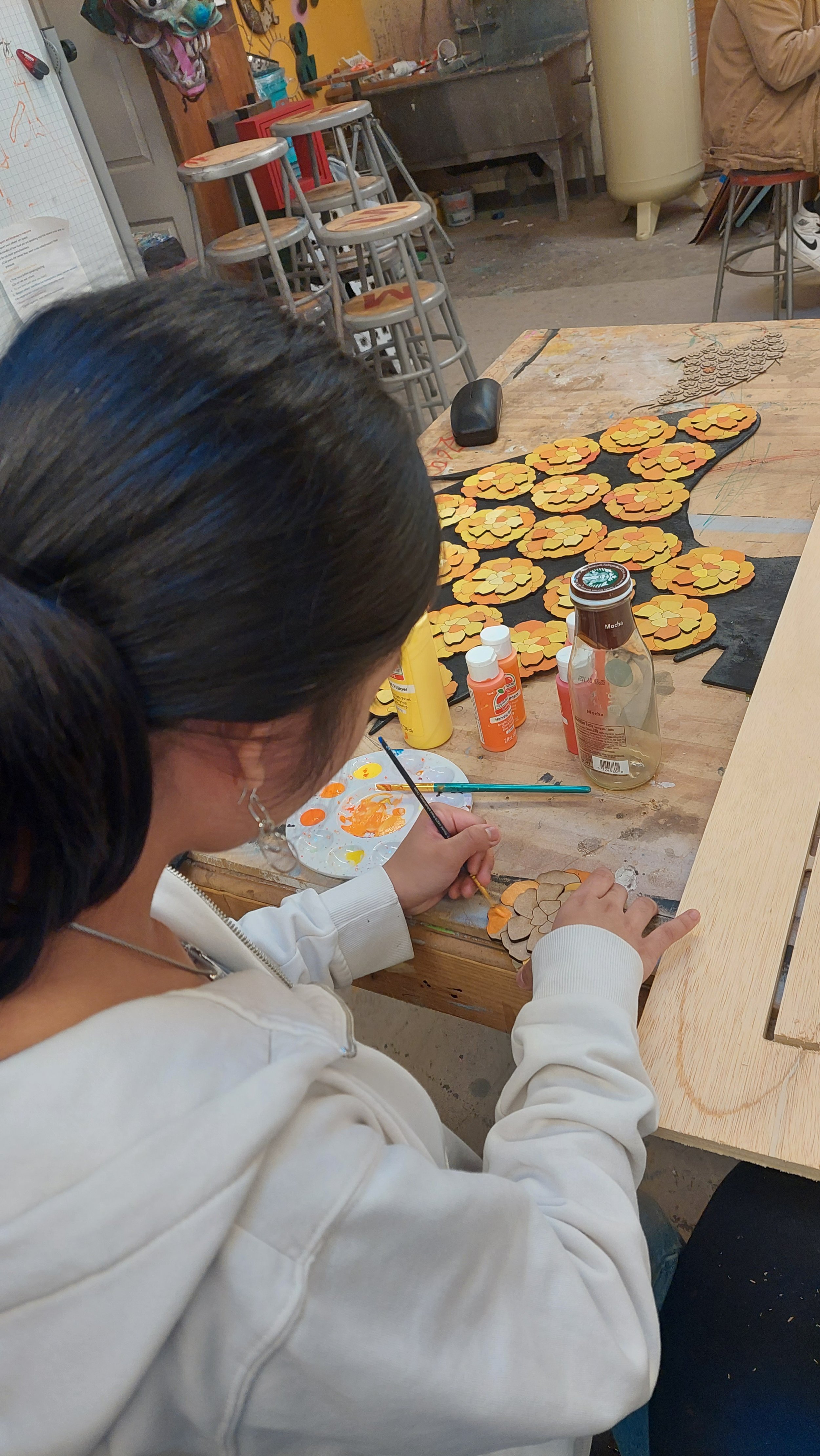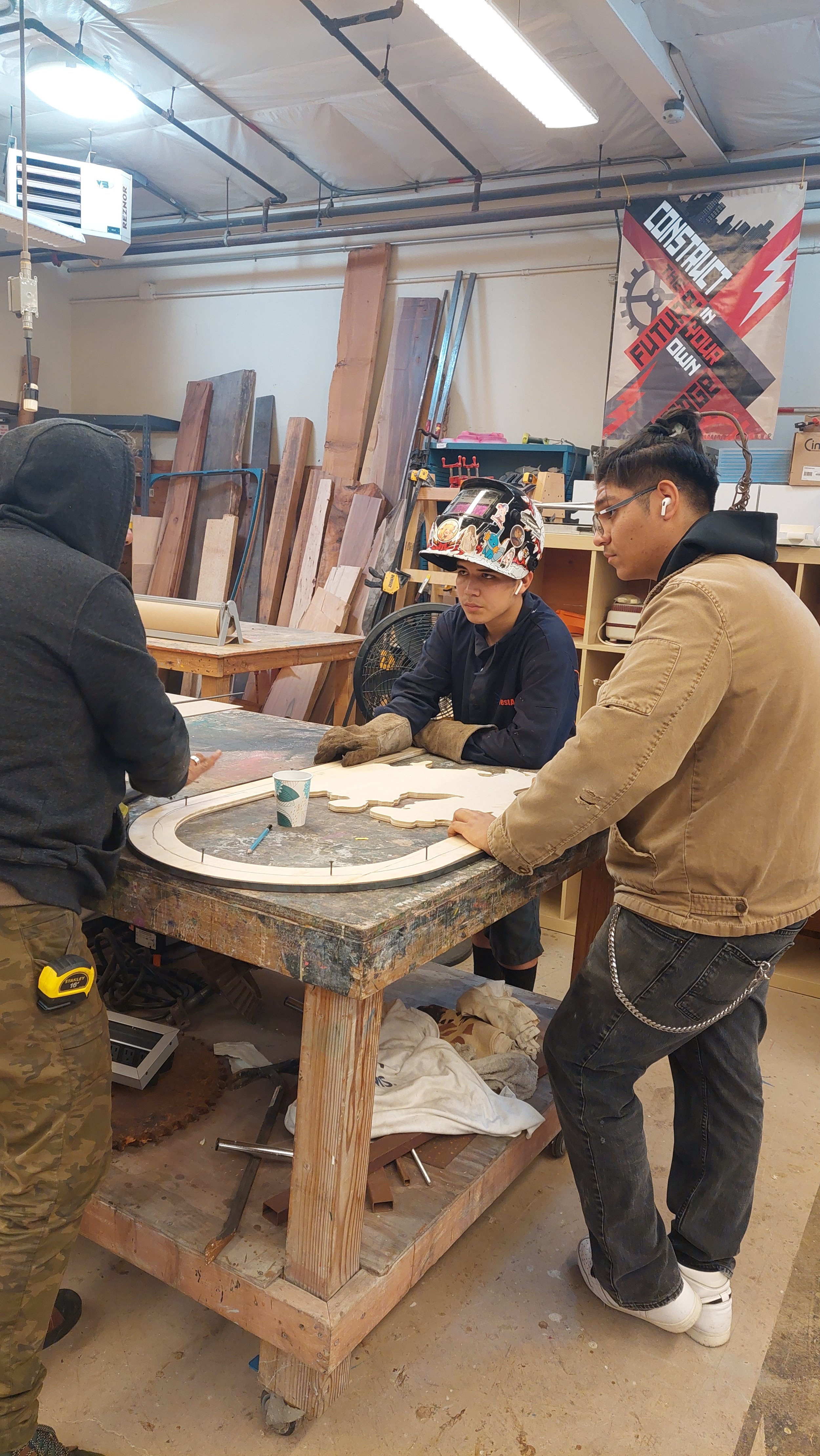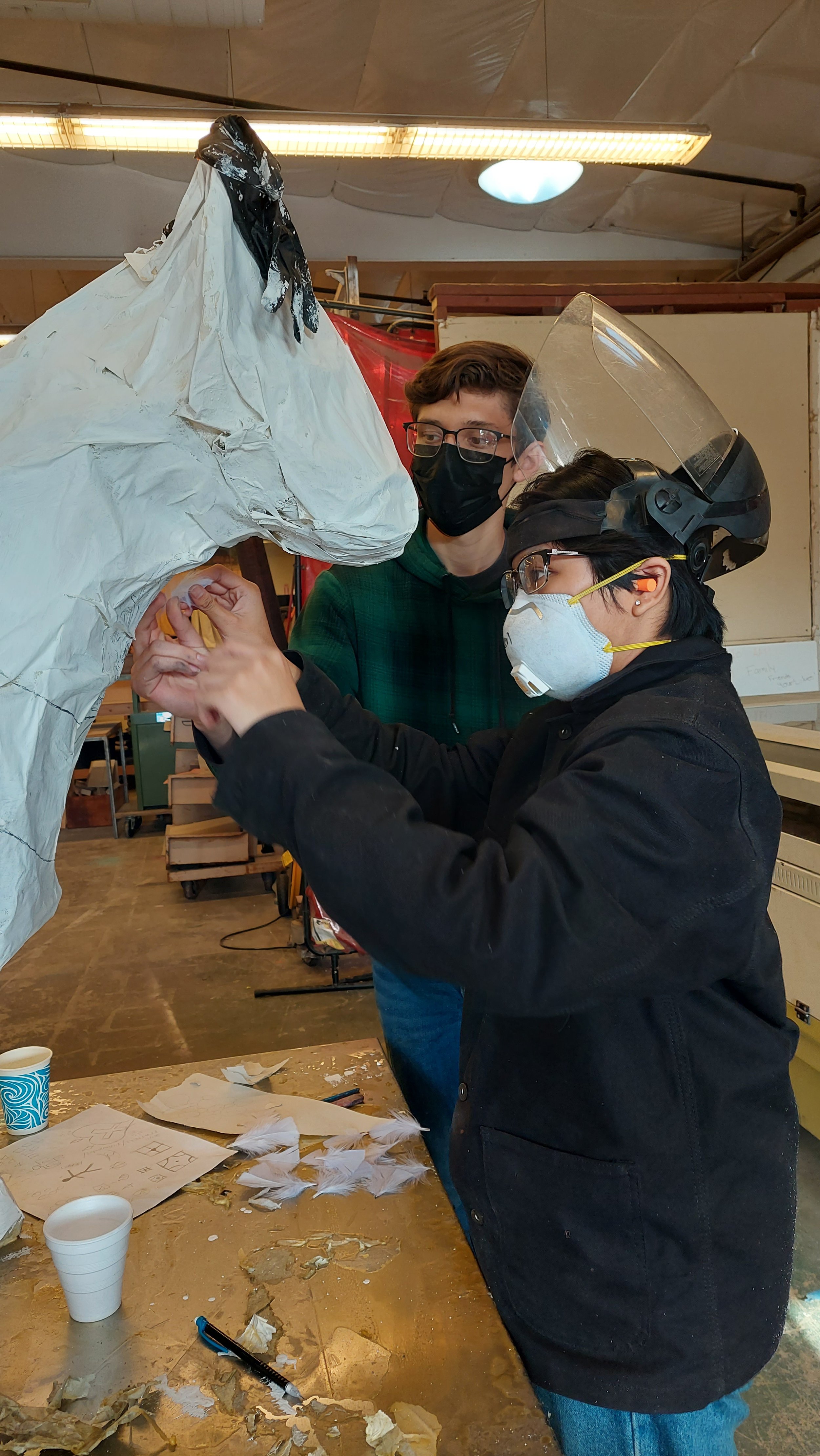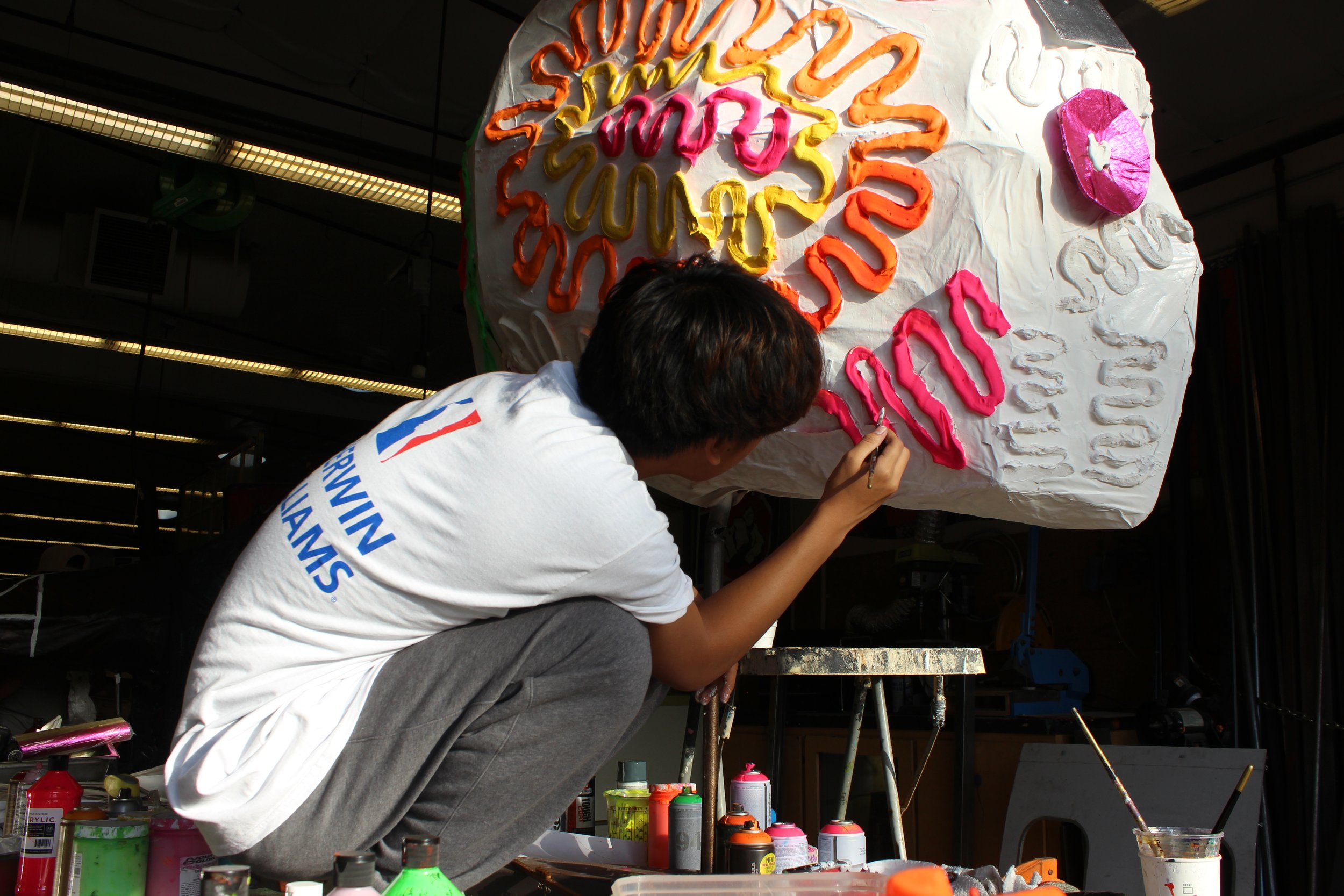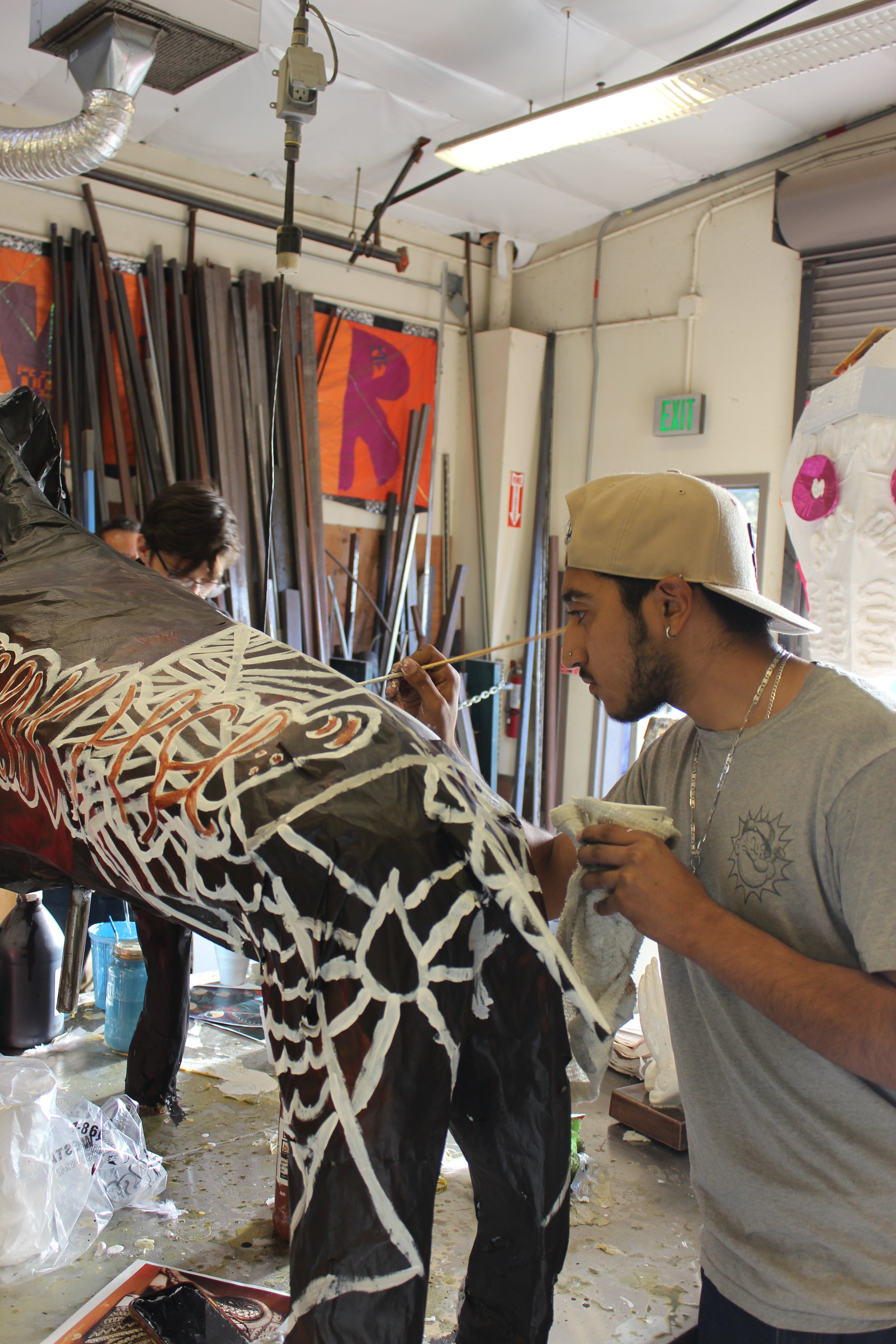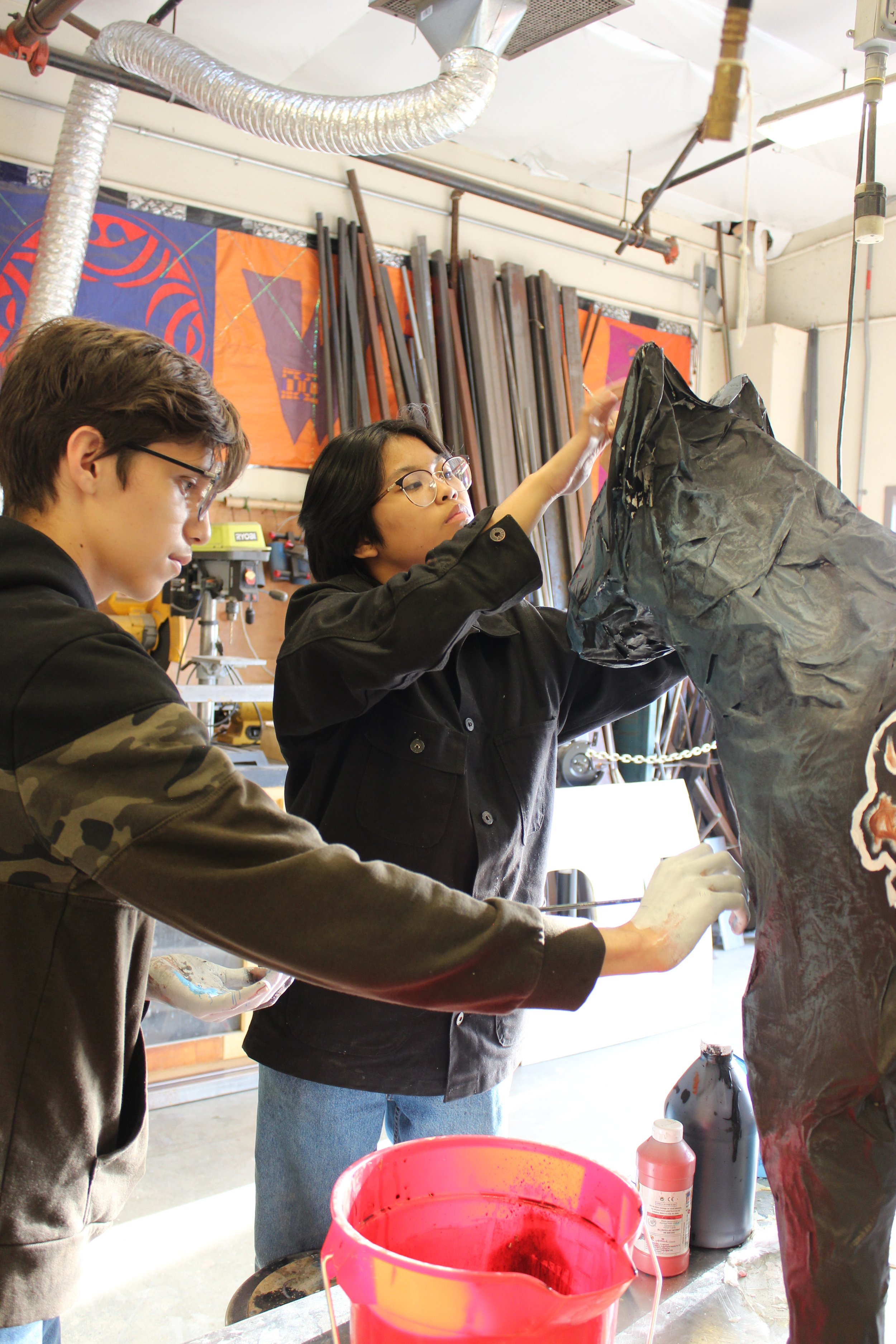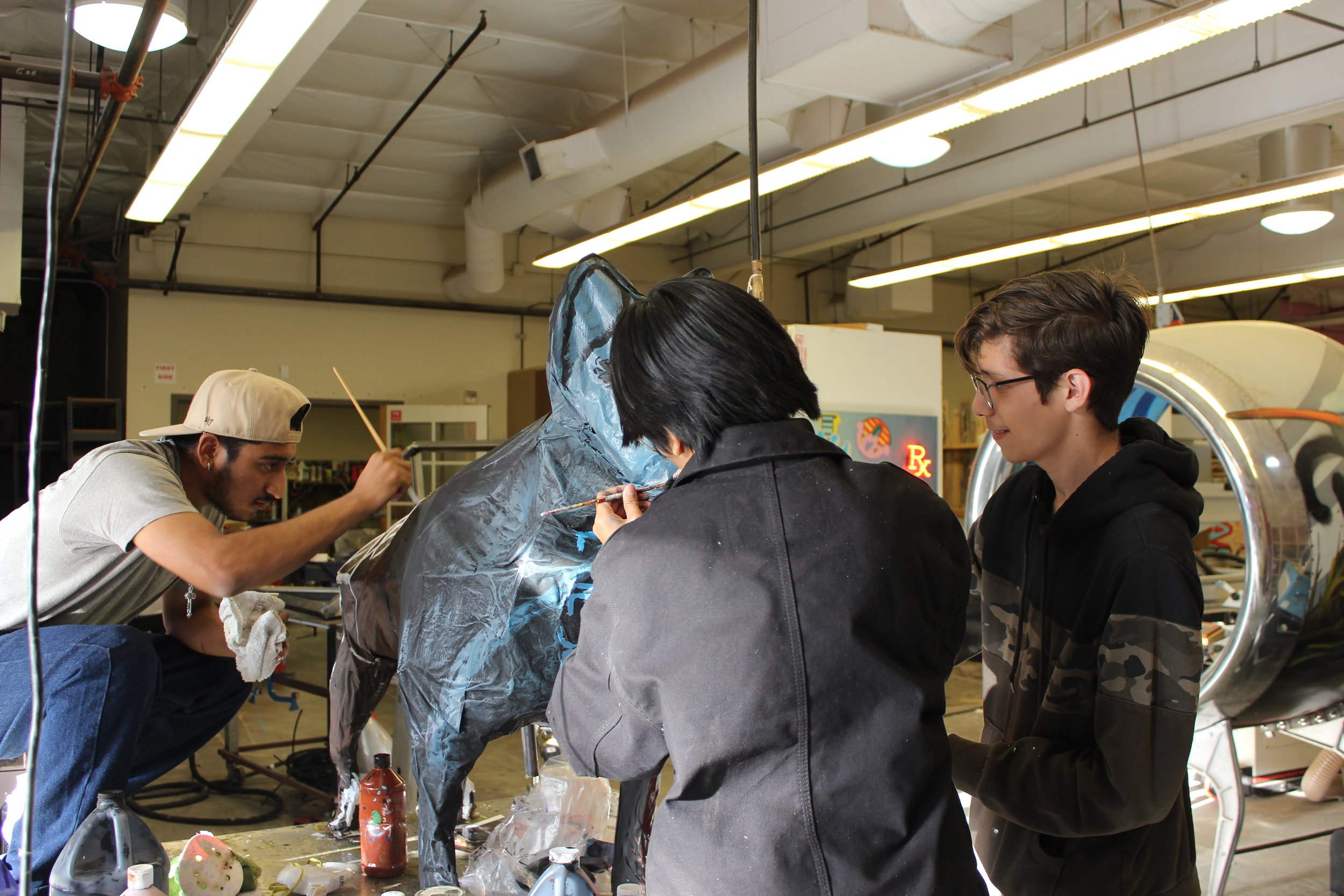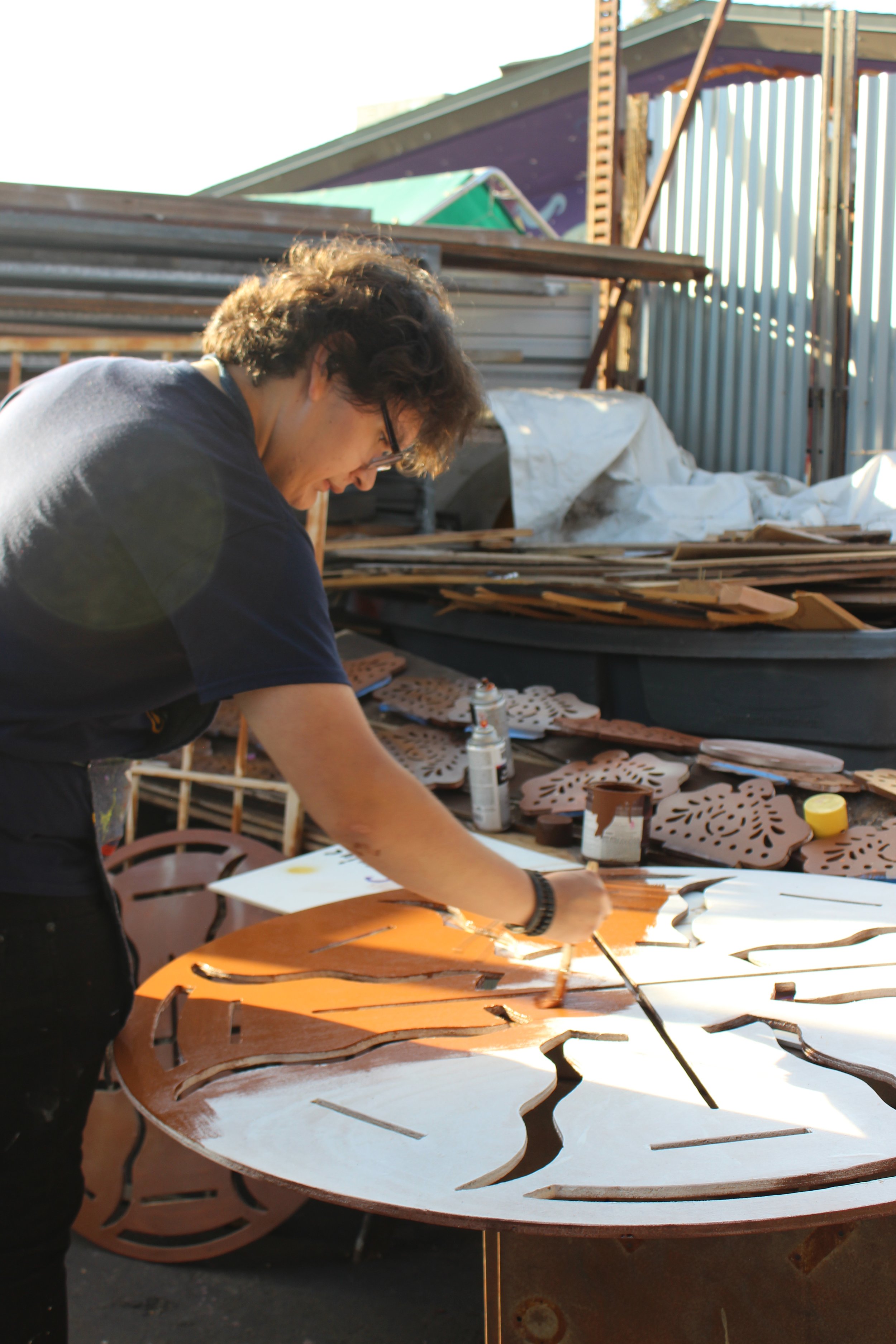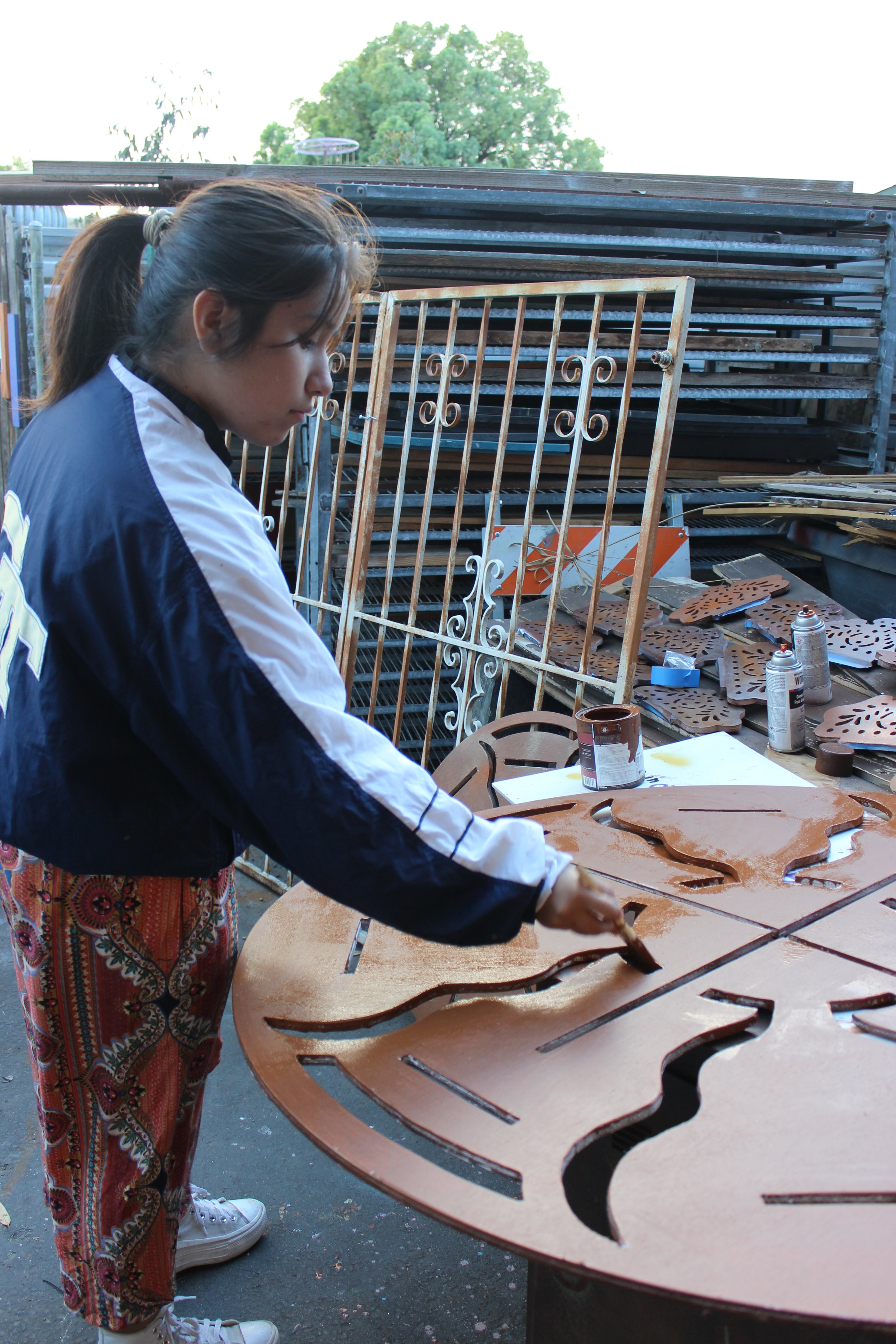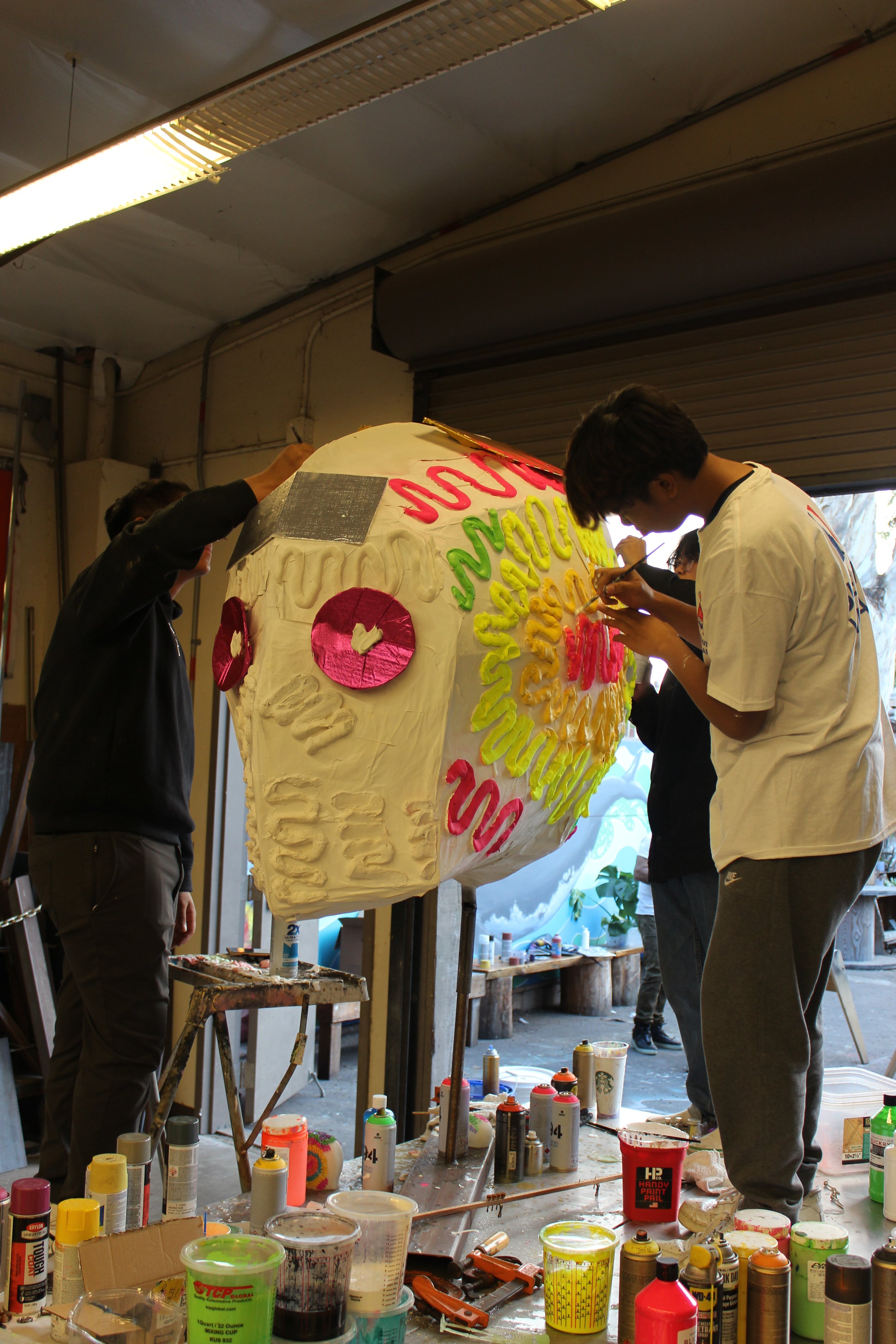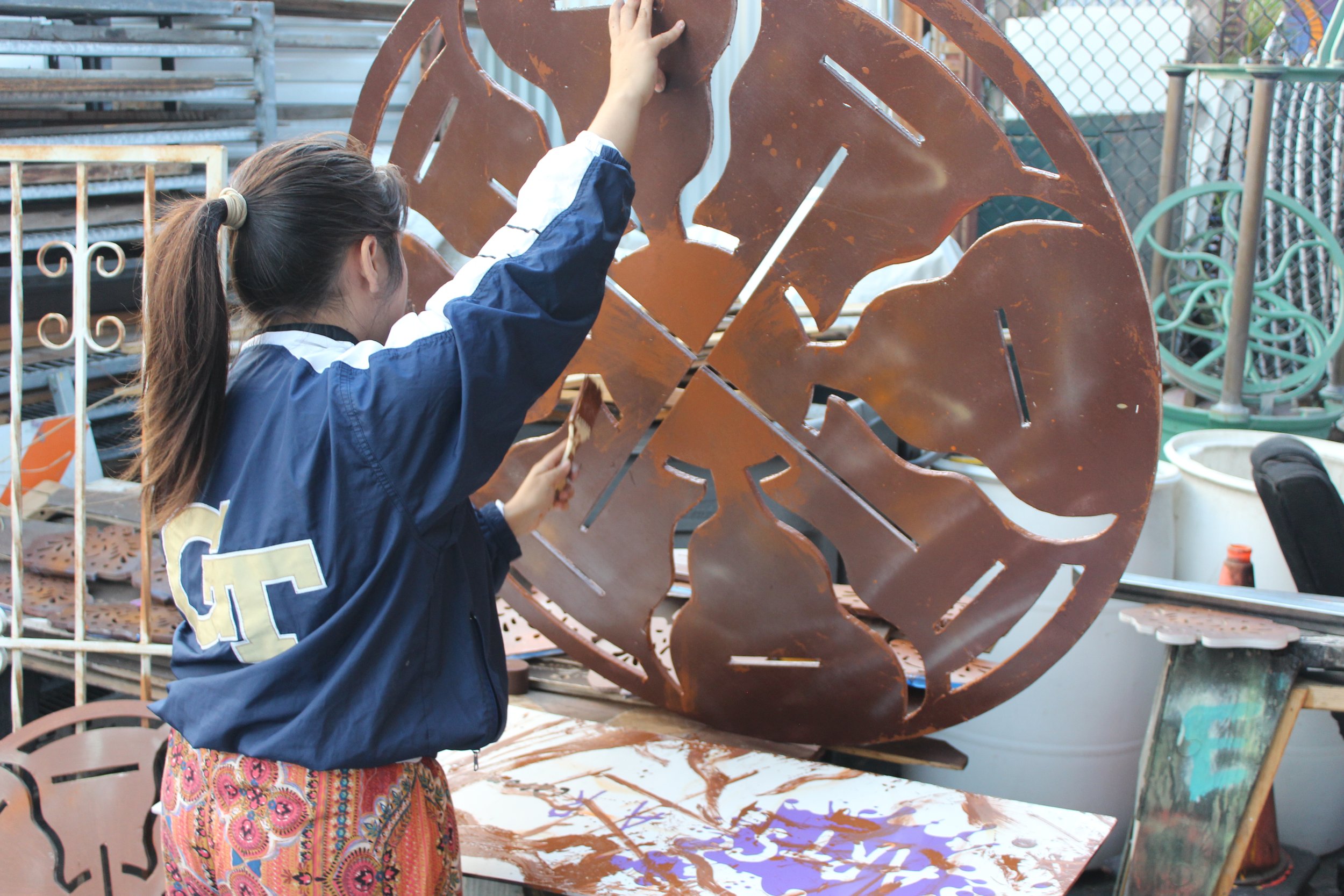ARTS @ Work - Fall 2022
ARTS @ Work is a special program where we work with local high school and provide internships to youth with real world professionals in art and design fields! This Fall our ARTS @ Work program featured 13 students from Sweetwater High School’s Engineering and Welding Academy. These students were specifically chosen for their artistic abilities and their interest in creative opportunities.
We are extremely proud of the commitment and dedication these students invested in their work this Fall and we hope you are able to check out the pieces in person at the National City Día de los Muertos Festival in Kimball Park on November 4th!
Copal
Some important elements that comprise a traditional Dia de Los Muertos altar are copal, incense, and candles which use aroma and smoke to guide souls to the altar. One important aspect of Dia de Los Muertos is to bring the 5 senses back to the soul, here, the copal brings back sense of smell. The artists’ chose to depict a grandmother blowing the copal, using the scent to guide her deceased loved ones back home. This holiday is all about family, so the artists’ chose to represent grandmothers in their peice, who are often pillars of their families.
Xoloitzcuintli
Xoloitzcuintli are black, hairless dogs that you may also see on traditional Dia de Los Muertos altars. You may already know a Xoloitzcuintl from media: Dante from Coco! The artists’ chose to depict the dog in a dominant stance with its’ back arched to, to show the dog is proud. They also chose to coat it in UV reactive paint, so the dog will change colors from day to night, representing its’ crossing over to the other side, and as it glows, it serves as a guide to the wandering souls back to their families.
Calavera de Azúcar
You may recall seeing some brightly colored, glittery, sugar skulls adorning Dia de Los Muertos altars. These skulls, each representing a departed loved one, are usually decorated with the person's name on the forehead to honor the return of visiting spirits. The artists’ created a paper mache sugar skull, using a roundbar frame on the inside as the frame for the skull. The eyes were kept hollow with LED lights placed inside, to represent that “even if they’re dead, they are kept alive in the minds of their loved ones”.
Cempasúchil
A Dia de Los Muertos altar isn’t complete without orange, yellow flowers called cempasuchil. These bright, fragrant flowers, native to Mexico and Central America, represent the holiday’s celebration of life rather than the mourning of the dead. Due to this, the artists’ wanted to make sure they fully represented this holiday’s lively spirit, by making the archway colorful and bright. In the center of the archway, the artists’ depicted a couple dancing, once again illustrating that this holiday is meant to be a celebration!
Pan de Muerto
Along with other food ofrendas (offerings), you may see pan de muertos on the steps of Dia de Los Muertos altars. These breads can be shaped like skeletons, skulls, animals, or humans but the classic hojaldra bread is circular to symbolize the circle of life and death. The artists’ chose to depict a traditional Dia de Los Muertos altar, but instead rounding the tiers to mimic the traditional hojaldra bread. This was a specific choice, to show that while the altar is covered with pan de muertos, the altar itself is also one giant pan de muerto!
ARTS @ Work Fall 2022 Cohort:
Aracely p., Armando G., Bustamante A., Christine Q., Erick R., Gabriel E., Jafet G., Leonardo L., Oscar L., Relyn C., Ren S., Seth M., Yarely r.
Check out a behind the scenes look at the our ARTS @ Work - Fall 2022 projects!






